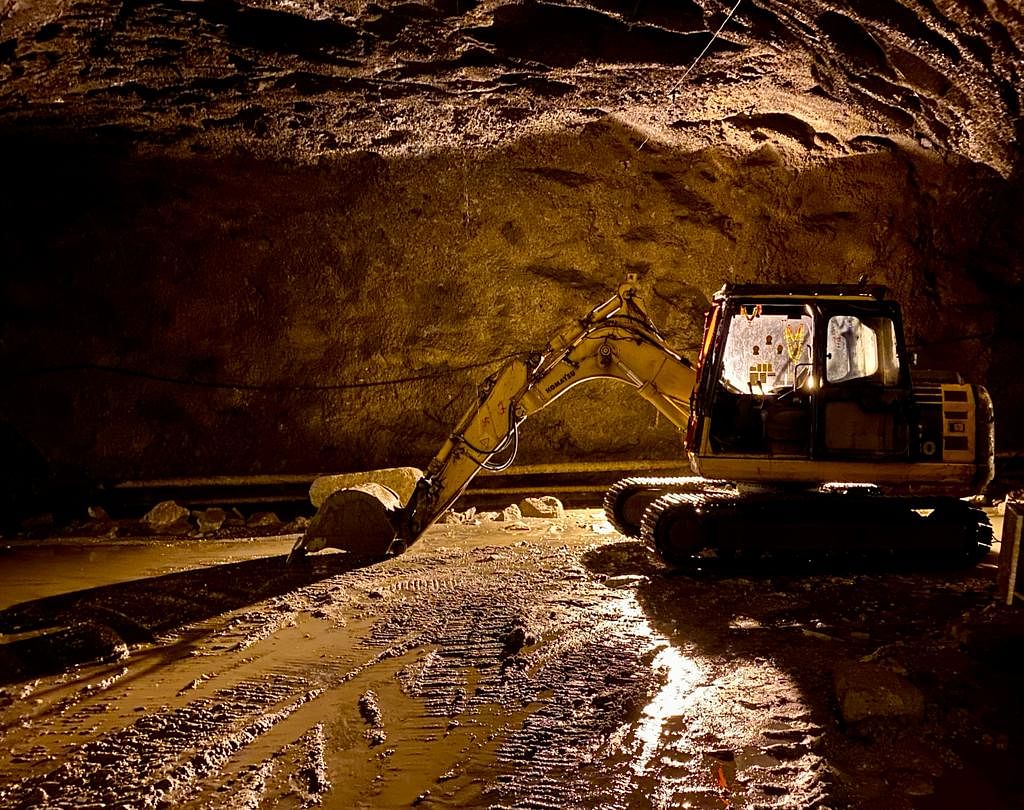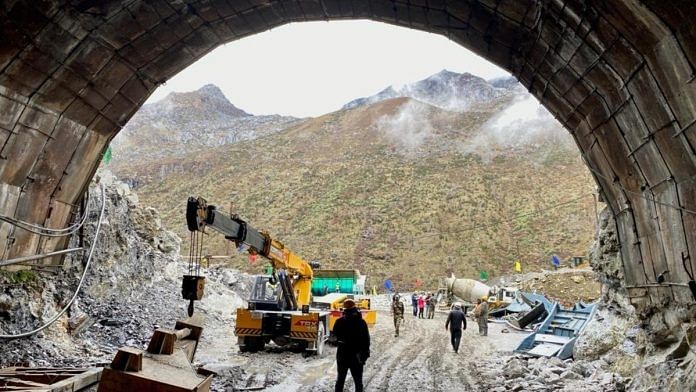Bum La, Arunachal Pradesh: India is ramping up its infrastructure in Arunachal Pradesh to counter an aggressive China — from speeding up work on new tunnels that provide all-weather connectivity to critical border areas to building new road access, bridges, forward helicopter bases and underground fortified ammunition storage.
While most of these projects were planned earlier, the ongoing stand-off with China has ensured that the projects have been accelerated on an urgent basis.
However, despite the quicker construction, sources in the defence establishment admit that “in terms of infrastructure, we are behind the Chinese by a decade”.
The Chinese have been focusing on ramping up their infrastructure along the Line of Actual Control (LAC) for several years and have a much superior road connectivity to the LAC.
“There is no doubt that the Chinese have better infrastructure. This is what we are changing. The ongoing infrastructure projects have been sped up with use of innovative and modern technology. Simultaneously, more projects are being initiated,” a source told ThePrint during a visit to forward areas in Arunachal Pradesh.
Another source added that there has been a shake-up in infrastructure in the last three years. “A year from now, things will be drastically different and the infrastructure will keep improving,” said the second source.
Sources admit that there is a sense of urgency now among the authorities and the military given the ongoing tensions with China, which has spread all along the LAC and is not just limited to eastern Ladakh.
Traditionally, the 832-km-long LAC in Ladakh is looked after by a single division of the 14 Corps, and the 1,346-km LAC in Eastern Command has two corps (three divisions each) assigned to take care of the region, making it one of the most heavily-guarded areas in the country.
However, with tensions mounting at the LAC, multiple changes have been made in the troop deployment patterns, with induction of more soldiers in eastern Ladakh. Both the eastern and northern commands have also got an additional offensive corps each now.
Also read: Indian Army initiates Tibetology course for its officers amid LAC standoff
Work in fast mode
The speed of infrastructure build-up in Arunachal Pradesh has been boosted to the extent that authorities are looking at completing the all-important Rs 700-crore Sela Tunnel project ahead of schedule in June next year.
This strategic project along with Neciphu tunnel on the 317-km long Balipara-Charduar-Tawang (BCT) road that leads to West Kameng and Tawang districts of Arunachal Pradesh will ensure that both defence and private vehicles will have all-year mobility.
The Sela Tunnel project, which has the main and escape tunnels of 1,555 metres long each besides a shorter tunnel of 980 m and about 1.2 km of road, will ensure that the Chinese are not able to monitor traffic movement in the area. The Sele Pass, at 13,700 feet, is currently visible to the Chinese.
The tunnels are designed in such a way that all Army equipment, including Bofors, tanks and even future inductions like the Vajra howitzers, can easily travel through it, away from the prying eyes of the Chinese while also cutting down time and having a year-long access.
Currently, the Sela Pass closes down in winter due to heavy snowfall and bad weather.
“The first tunnel will be completed by Army Day (15 January) 2022 while the second one will be completed by June. This is ahead of the planned August schedule for completion,” Sela tunnel project director Colonel Parikshit Mehra told ThePrint.

Col Parikshit, who is with the Border Roads Organisation (BRO), was handpicked for the Sela Tunnel project last year given his experience in the construction of the Atal Tunnel in Rohtang, a project he was associated with for five years.
“The Sela Tunnel will then become the world’s longest bi-lane tunnel above the height of 13,000 feet. The experience of the Atal Tunnel has come handy because we have been using a very scientific, cutting(-edge) mechanism backed by modern equipment, which is helping us complete the project in a faster duration than anticipated,” said Col Parikshit, who has an M. Tech degree from IIT Delhi and another Master’s from Austria.
The nearly 180-km-long western axis, which plans to connect Shergaon-Rupa-Tawang, is the other important project for both military and civilian use.
Eventually, there would be three-road access to Tawang from Assam.
“The infrastructure has been a major focus not just from the military point of view but also from the civilian aspect. A smoother connectivity is what matters in such mountainous terrain where the weather can also have its own play,” said Major General Zubin A. Minwalla, who is the General Officer Commanding of the 5 Mountain Division.
Also read: India among few countries developing hypersonic missiles, US Congressional report says
Helicopter bases, underground ammunition storage
Besides the tunnels, nearly two dozen bridges are being constructed, some of which have been completed. These will provide crucial connectivity to all kinds of military equipment, sources explained.
Moreover, the Army is focusing on ensuring that there are forward helicopter bases in higher numbers for swift troop movement when needed.
The focus in the Eastern Command is on technology rather than more boots on the ground, as ThePrint reported earlier.
India is also investing in a more technology-driven security grid that monitors the movement of the PLA activities not just at the LAC but also in-depth on a 24×7 basis.
Along with induction of tactical systems like the L 70 guns, Bofors, M-777 lightweight howitzers, Pinaka and Smerch rocket systems, among others, this has ensured that India has better firepower now at the LAC.
Sources said efforts are also on to set up fortified underground ammunition storage.
“The storage places will ensure that there is constant supply to the troops and since they are underground and fortified with heavy engineering, they will be able to withstand any bombardment,” said one of the sources cited above.
The underground and fortified tactic is also being extended to the LAC, where the Army has set up integrated localities for both defensive and offensive operations.
Migration from border villages a concern
Besides larger military infrastructure, China has also been focusing on building new border villages, which will eventually end up having dual military and civil use.
This ongoing project was also flagged by Eastern Army Commander Lt Gen Manoj Pande, who said the development has been taken into operational planning.
In sharp contrast, there is a migration issue in Indian villages close to the LAC. Official sources ThePrint spoke to said people have moved out from villages close to the LAC to the cities due to the terrain and lack of infrastructure.
“But things are changing. A lot of development is happening and people are happy with this,” a source explained.
There are about 600 villages within the 10 km radius of the 1046-km LAC that Arunachal Pradesh shares with China-controlled Tibet, sources said.
An Arunachal Times column last week highlighted that civilians can’t gain access beyond certain points. “While the Indian Army makes it impossible to go beyond a certain area for civilians, the Indian government refuses to provide basic facilities to border villages, leading to voluntary depopulation,” the column said, adding that populating the border areas has been the Chinese government’s policy.
The issue of border migration in Arunachal Pradesh was flagged even in 2013.
Besides basic infrastructure like medical and clean drinking water supply being an issue, other necessities like mobile phone connectivity are also unavailable in border areas. Mobile phones instead pick up Chinese networks in border areas. Soldiers on the front lines are strictly directed not to switch on their phones so as not to allow the PLA to know the exact numbers of deployment.
Also read: Indian Navy receives 11th P-8I anti-submarine aircraft from Boeing






